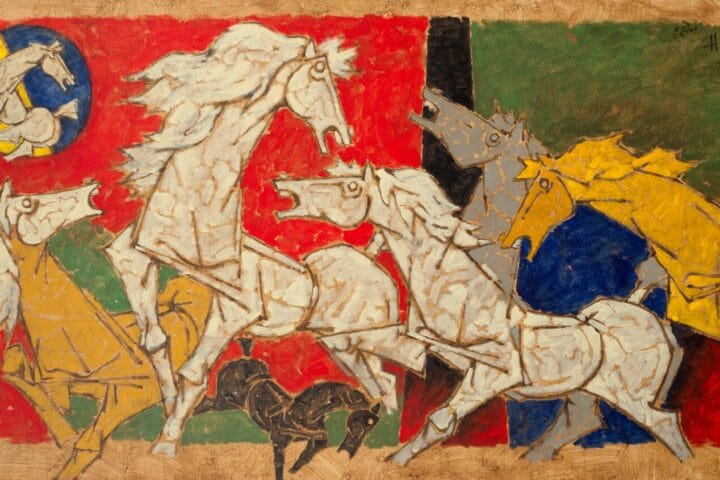Caravaggio’s painting, The Conversion of Saint Paul, is a classic example of the Baroque style. It depicts the moment when Saul was struck to the ground by a heavenly light while on his way to Damascus in order to persecute Christians, and miraculously converted to Christianity.
The painting shows not only Saul on the ground but also his horse rearing up with fear. The centurion and two soldiers accompanying him look on in shock as they witness this supernatural occurrence. Caravaggio carefully captures their emotions of surprise and confusion in their facial expressions.
The light from above is a powerful force that symbolizes God’s power and grace that allows for His will to be done. The bright white light illuminates Saul’s features, which are cast in shadow due to the darkness of his clothing. This serves to emphasize his transformation from persecutor to believer.
Caravaggio captures this intense moment with masterful skill and detail. His use of chiaroscuro creates an almost tangible atmosphere filled with dramatic contrasts between light and dark, creating a sense of divine presence amidst earthly chaos as well as highlighting Saul’s transformation from darkness into light.
The painting has been praised for its psychological insight throughout art history; it has been said that its emotional intensity reveals Caravaggio’s profound understanding of human nature and its capacity for spiritual change despite the doubts or fears one may have beforehand. Indeed, The Conversion of Saint Paul is considered one of Caravaggio’s greatest works and remains a timeless example of Baroque artistic expression today.















